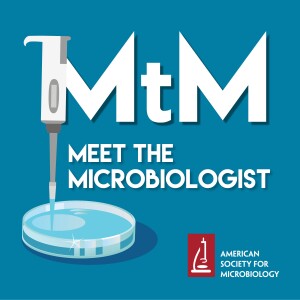
128: Managing Plant Pathogens Using Streptomyces with Linda Kinkel
 2020-03-26
2020-03-26
How can the intricate relationship between soil microbiota and plants be managed for improved plant health? Linda Kinkel discusses new insights into the plant rhizosphere and the ways that some Streptomyces isolates can protect agricultural crops against bacterial, fungal, oomycete, and nematode infections.
Julie’s Biggest Takeaways:
The soil microbiome is extremely dynamic, with boom-and-bust cycles driven by nutrient fluxes, microbial interactions, plant-driven microbial interactions, and signaling interactions. Finding the source of these boom-and-bust cycles can help people to manage the microbiome communities and produce plant-beneficial communities for agricultural purposes.
Rhizosphere soil is soil closely associated with the root and is distinct from rhizoplane soil that directly touches the root. The endophytic rhizosphere are those microbes that get inside the root. Many scientists view these communities as a continuum rather than sharply delineated.
Plants provide necessary carbon for the largely heterotrophic soil microbiota, and these microorganisms help the plants in several ways too:
Microbes mediate plant growth by production of plant growth hormones. Microbes provide nutrients through mechanisms like nitrogen fixation or phosphorus solubilization. Microbes protect the plant from stress or drought conditions.Through a University of Minnesota plant pathology program, potatos were passaged in a field for over 2 decades to study potato diseases. Over time, researchers found fewer diseases in test crops, which led the plot to be abandoned in the late 1970s. In the 1980s, Dr. Neil Anderson planted potatoes to see if they would develop disease, but neither Verticillium wilt nor potato scab developed among the plants. Soil from the field (and on the potatoes) contained Streptomyces isolates that showed antimicrobial activity against bacteria, fungi, nematodes, and oomycetes. This discovery led Neil, new University of Minnesota professor Linda, and their collaborators to study the antimicrobial activity of natural Streptomyces isolates from around the world.
Inoculation quickly adds specific microbial lineages to soil microbiome communities. Alternatively, land can be managed by providing nutrients to encourage the growth of specific species, like Streptomyces, within a given plot, but this takes longer to develop. How are soil microbiomes inoculated? Microbes can be:
Added to the seed coating before planting. Placed in the furrow when the seed is planted. Distributed into the irrigation system.Links for this Episode:
Linda Kinkel website at University of Minnesota Essarioui A. et al. Inhibitory and Nutrient Use Phenotypes Among Coexisting Fusarium and Streptomyces Populations Suggest Local Coevolutionary Interactions in Soil. Environmental Microbiology. 2020. Schlatter D.C. et al. Inhibitory Interaction Networks Among Coevolved Streptomyces Populations from Prairie Soils. PLoS One. 2019. Schlatter D.C. et al. Resource Use of Soilborne Streptomyces Varies with Location, Phylogeny, and Nitrogen Amendment. Microbial Ecology. 2013. Small Things Considered blog: Are Oomycetes Fungi or What? International Year of Plant Health HOM Tidbit: Austin-Bourke P.M. Emergence of Potato Blight, 1843-1846. Nature. 1965.
More Episodes
 2008-09-19
2008-09-19
 2008-09-09
2008-09-09
 2008-08-18
2008-08-18
Create your
podcast in
minutes
- Full-featured podcast site
- Unlimited storage and bandwidth
- Comprehensive podcast stats
- Distribute to Apple Podcasts, Spotify, and more
- Make money with your podcast
It is Free
- Privacy Policy
- Cookie Policy
- Terms of Use
- Consent Preferences
- Copyright © 2015-2024 Podbean.com




